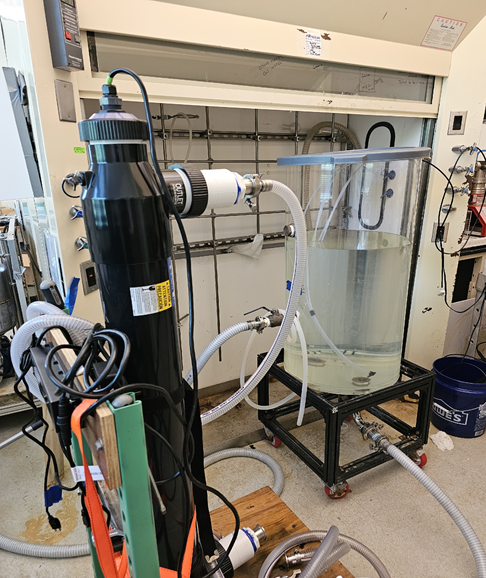
Through a Cooperative Research and Development Agreement, we have designed, developed, and are now implementing a patent-protected process for removing per- and polyfluorinated substances (PFAS), which are known carcinogens, from water sources. This novel technology can be applied at any scale required. NCCOS scientists are beginning to incorporate these systems into municipal water systems, as well as into industrial waste effluent.
Why We Care
The forever chemicals, per-and polyfluoroalkyl substances (PFAS), are used to make fluoropolymer coatings and are in a variety of products that humans use daily, including clothing, furniture, adhesives, food packaging, heat-resistant non-stick cooking surfaces, and more. These chemicals often leach into soils and water sources. In fact, PFAS are found in most municipal water sources as they are difficult to filter and often leach from the actual filtration systems. These chemicals are known to bioaccumulate in fish and wildlife, potentially affecting growth and development.
What We Are Doing
NCCOS scientists have built upon nanobubble ozone technology, or NBOT — which is highly effective in controlling algae, bacteria, and motile zooplankton in ship ballast water — to destroy PFAS chemicals from water bodies. Nanobubbles are ultrafine microbubbles that scientists can impregnate with a compound (ozone in this instance) and release into an environment. Ozone is a highly reactive molecule composed of three oxygen elements. Its unstable nature allows it to react with and bond to other molecules, breaking up the toxic bonds and forming new, stable bonds within the environment where it is released. However, on its own, ozone is not strong enough to break the bonds of PFAS compounds, which are composed of carbon and fluorine, the strongest bond in organic chemistry. NCCOS scientists are working with Cooperative Research and Development Agreement (CRADA) partner, American Marine University Research Institute — who provides the equipment needed to accompany the scientific expertise to accomplish this task — to discover a process to break the powerful bond between carbon and fluorine.
What We Found
After several tests, NCCOS scientists discovered that NBOT doesn’t break the carbon–fluorine bonds in PFAS by itself. However, coupled to properly tuned ultraviolet (UV) light as an added energy source, the coupled sequence of UV plus NBOT destroys PFAS analogs. Once broken, fluorine bonds to itself creating fluorine gas, while carbon bonds to oxygen creating carbon dioxide gas, and both outgas from the water body as volatile components, which then evaporate.
Benefits of Our Work
This approach is the first of its kind, truly destructive process for these harmful chemicals from drinking water and bodies of water. NCCOS scientists collaborating with CRADA partner(s) have run successful tests in laboratory settings as well as in open water mesocosms. This approach is both scalable and configurable. The technology is safe and environmentally friendly as it results in leaving only oxygen behind, as opposed to legacy residues common in other PFAS trapping technologies. NCCOS scientists are currently implementing this technology in metropolitan areas focused on drinking water and waste water treatments.
